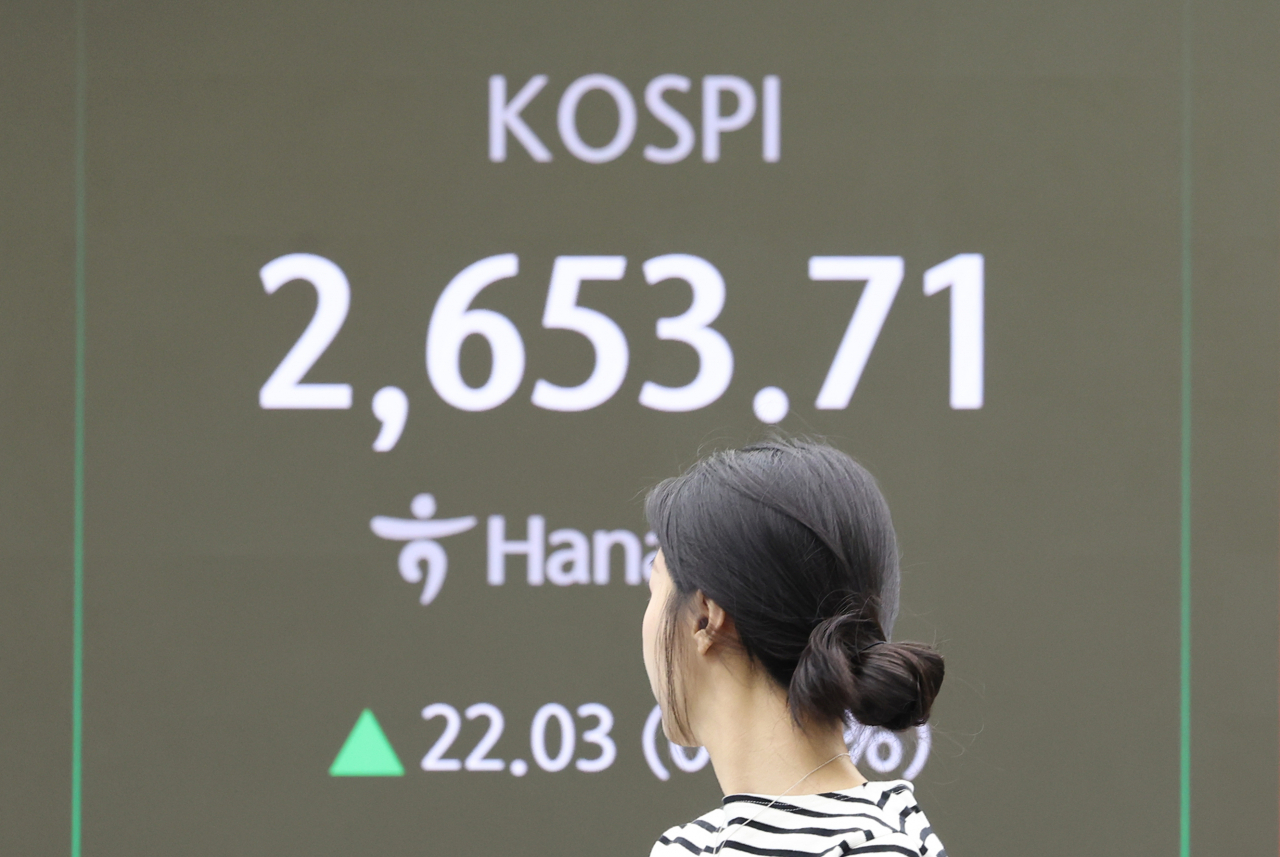
 |
| A screen in the dealing room of Hana Bank in Seoul shows the benchmark Kospi climbing 0.80 percent during an early morning session on Wednesday. (Yonhap) |
The Korean equity market reacted to the launch of an index developed to address domestic companies' undervaluation with investors showing a preference for stocks included in the new index.
Following the Korea Exchange’s unveiling of the Value-up Index, comprised 100 Korean stocks with stellar corporate value, on Tuesday, those that made the list, including Samsung Electronics and SK hynix showed a strong start in Wednesday morning trading.
SK hynix and Samsung Electronics had gained 2.75 percent and 0.61 percent, respectively as of 2:25 p.m.
The exclusion of KB Financial Group and Hana Financial Group has raised investors' eyebrows, given that the two groups are active participants in the Corporate Value-up Program and their low valuations needed much boost through the government-initiated scheme.
KB and Hana fell 4.39 percent and 2.68 percent.
“The Value-up Index is not designed to increase the value of companies with low corporate value, but rather to provide incentives to companies whose corporate value is already high,” Daishin Securities Quant Strategist Jo Jae-un said.
“It is a system in which a company's efforts to be included in the Value-up Index for incentives increase its corporate value,” he said.
Such incentives may include the rising of stock prices, cash flow growth or an improved corporate image, proving that the firm is working well on its governance and shareholder return policy.
Unlike the Kospi 200, which incorporates top stocks by market capitalization, the Value-up Index uses various indicators such as the price-to-book ratio and return on equity to pick the stocks to be included in the gauge.
Analysts suggested that financial stocks that faced a setback in adding themselves to the index are required to adopt a more concrete shareholder-friendly policy.
“The biggest reason the results were different from expectations was that the PBR (price-to-book ratio) requirement was not met,” NH Investment & Securities Analyst Jeong Jun-sup said.
“For stocks not included this time, a more active shareholder return policy is needed to improve the low PBR along with disclosure of value increases that meet the market's expectations. In particular, in order to quickly improve the PBR, the scale of share buybacks and cancellations needs to be expanded.”
Since February, the stock prices of stocks expected to be included in the index have been reflected in advance due to expectations of a value increase. Still, stocks that were not expected to be added in the index will likely see a high possibility of capital inflow due to this announcement, analysts said.
By sector, finance and consumer stocks that were representative undervalued stocks had a high degree of pre-reflection in their stock prices.
Stocks that had spurred low expectations for inclusion, such as information technology and health care stocks, are likely to see upward movement. Of the select 100 stocks, 24 are from the IT industry and 12 are in health care firms.
Whether institutional investors like the National Pension Service will allocate their capital to the Value-up Index, composed of high-PBR stocks, remains questionable. A high PBR may indicate overvaluation.
“The basis for purchasing overvalued stocks is the mid-to-long-term growth potential of the country and market, such as the United States,” Lee Kyung-soo, a researcher at Hana Securities, said.
The recent on-year growth rates of the Value-up Index stocks are significantly lower than that of the Kospi 200, according to Lee. “It will be a burden for institutions (to invest in the Value-up Index) as they prefer undervalued stocks.”









